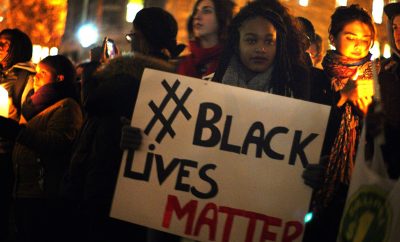 Image courtesy of [Kin Mun Lee via Flickr]
Image courtesy of [Kin Mun Lee via Flickr]
Society and Culture
Your Brain on Serial
Is it Thursday yet? #Serial
— Frank Lantz (@flantz) October 22, 2014
You’ve probably come across a tweet like the above on your timeline recently. You click on that hashtag and fall down a rabbit hole. For the uninitiated, Serial is a podcast from the producers of This American Life that takes one true story and methodically unpacks it, week after week, immersing the listener and letting us in on narrator Sarah Koenig’s inner reflections, doubts, and evolving theories. It has brought about the phenomenon of mass binge-listening that, as the Wall Street Journal noted, harkens back to “the golden age of radio.”
In the first season that started in October, Serial delves into the 1999 murder of a Baltimore high-school student, Hae Min Lee, and the conviction of her ex-boyfriend, Adnan Syed, a seemingly exemplary student-athlete, for first degree murder. In episode one we learn that Syed’s conviction rests almost entirely on the (inconsistent) testimony of a friend named Jay, who pled guilty to an accessory charge for helping Syed bury the body. In interviews with Koenig 14 years after his conviction, Syed maintains his innocence and emphatically defends this position pointing to the prosecution’s lack of physical evidence tying him to the murder. As each episode peels back a layer and reveals more, your conscience is yanked between disbelief that Adnan is capable of such a crime and the realization that he may, in fact, be guilty.
While this tension drives compelling “true crime” stories, the success of Serial is equally attributable to the fact that it challenges our understanding of how the justice system works. There’s a moment in episode eight of Serial where Koenig asks a former D.C. homicide detective, Jim Trainum, why detectives seemed to dismiss the inconsistencies in Jay’s testimony. Trainum says, “You don’t want to do something if it’s going to go against your theory of the case.” He tells Koenig, who is now incredulous and wondering where the truth fits in, “Rather than trying to get to the truth, what you’re trying to do is build your case and make it the strongest case possible.”
Ignoring inconsistencies when a witness’ story jibes with law enforcement’s theory of the case is what’s known as a ‘verification bias.’ The question then becomes how much of that bias is informed by stereotypes? Syed is a Muslim-American of Pakistani descent and the prosecution’s theory invoked his religious upbringing to suggest that he was torn between two worlds, and that he could be “possessive” and “controlling.” To a jury, the narrative that emerged may have resonated with stereotypes it had about Muslim men being controlling, and tipped the scale in favor of erasing any reasonable doubt of his guilt. In episode seven, Deirdre Enright, a lawyer with the Innocence Project, echoes this concern and her team notes several pieces of evidence found at the scene of the crime that were not subjected to forensic analysis.
At Syed’s sentencing on June 6, 2000, the Baltimore Sun reported that Baltimore Circuit Court Judge Wanda K. Heard, acknowledging Syed’s charisma and popularity, said: “You used that to manipulate people. Even today, I think you continue to manipulate even those who love you.” Serial may never confirm Judge Heard’s intuition but it does make one thing profoundly clear: our need to make sense of a senseless tragedy can cause us to manipulate facts along the way, turning the quest for justice into a mirror that, in the best case, reflects a distorted version of the truth which validates our own prejudices.








Comments